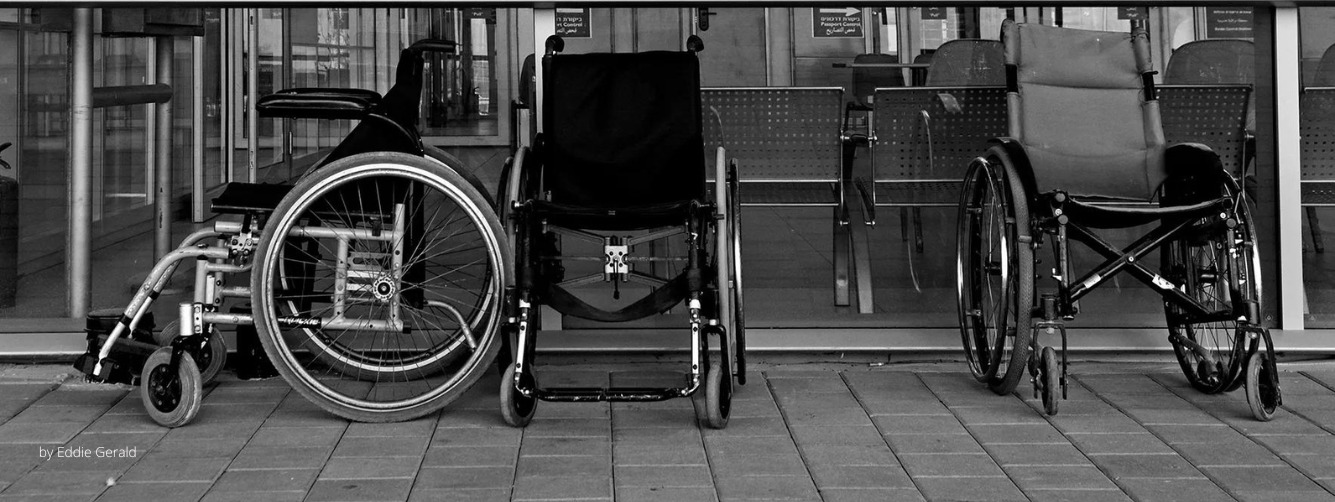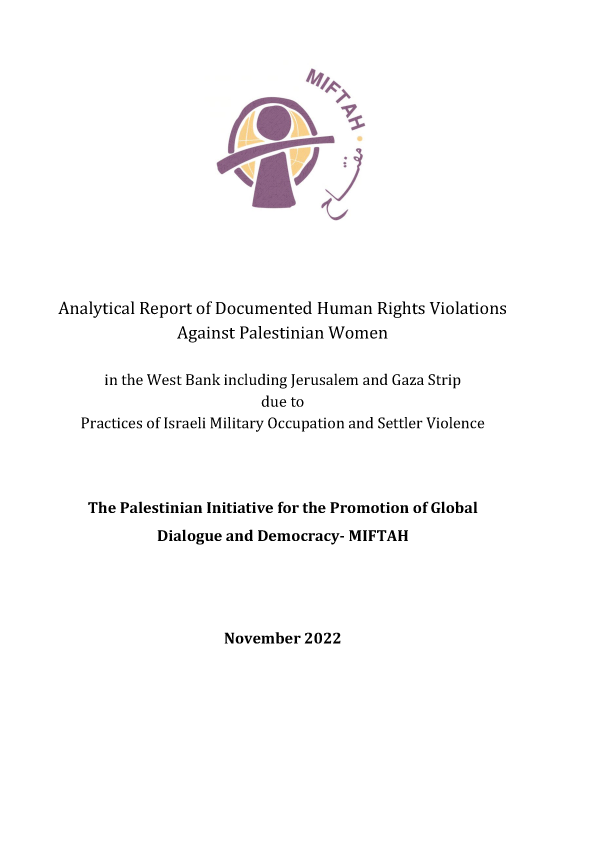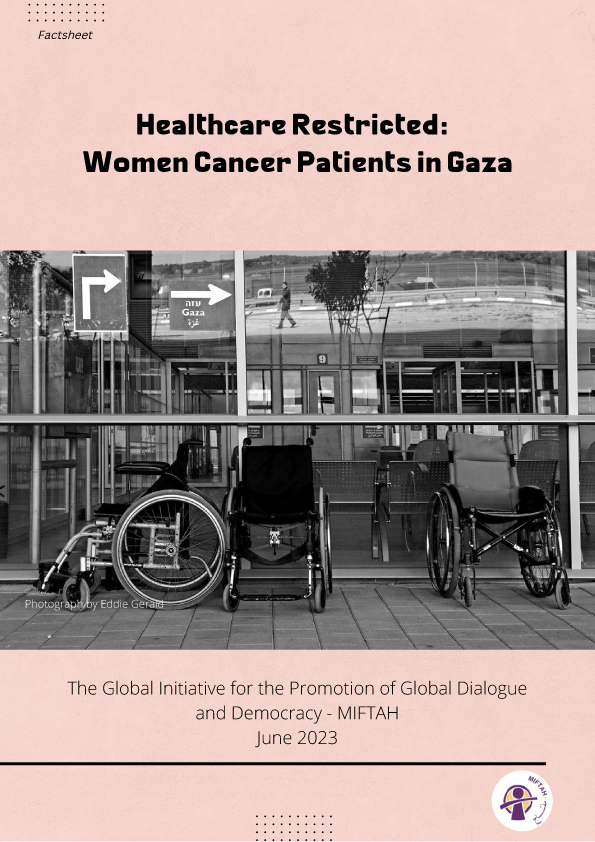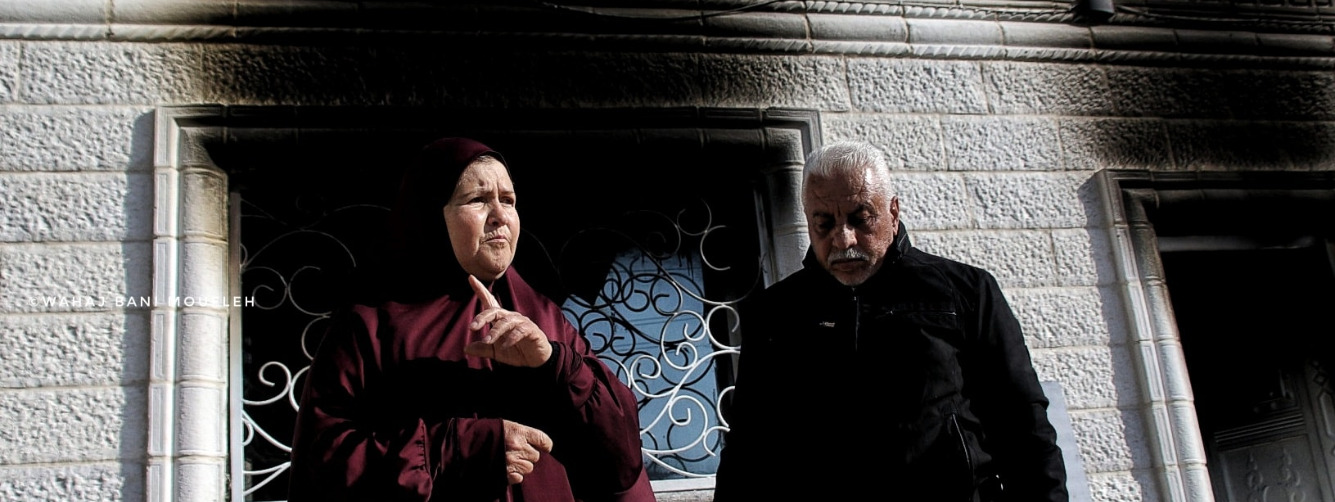Since 1967, every Israeli government has significantly expanded settlements, both in area and population, in the Occupied Palestinian territories by provided political, organizational and economic support, and encouraged their continual expansion. In 1977, the Likud party came to power and began vast construction of settlements throughout the West Bank. Settlement activity has continued unceasingly, even under the Labor government of Yitzhak Rabin (1992 – 1996).
Settler Population and Number of Settlements
According to B’Tselem, there are 380,000 settlers in the West Bank and Jerusalem. (B’Tselem, Land Grab. Draft Report, May 2002).
In July 2002, the Israeli Interior Ministry reported that the settler population in the West Bank (excluding east Jerusalem) and Gaza had grown by 10,847 since June 2001 to a total of 218,862, constituting a 5.2% increase (2000: 7.8%), mostly due to ”natural growth.”
Jewish settlers comprise less than 8% of the total Israeli-Jewish population. (PASSIA, Settlements Special Bulletin, 2001)
Israeli settlers constitute 9-10% of the total West Bank population, and only 0.6% of the Gaza population. (PASSIA, Settlements Special Bulletin, 2001)
About 50% of the settlers live in only 8 settlements. (FMEP, Nov.-Dec. 2001)
42% of the West Bank settlers are of Israeli origin, 35% of European/US, 11% of Asian and 12% of African origin. (PALDIS, Ideological Settlement in the West Bank Report, July 2002)
The total figure of residential settlement sites in the West Bank is 174, excluding paramilitary and military installations. (PALDIS, Ideological Settlement in the West Bank, Report, July 2002)
According to Peace Now there are 145 settlements in the West Bank and Gaza.
FMEP counts 157 settlement locations, 130 in the West Bank, 11 in east Jerusalem, and 16 in Gaza. (FMEP Settlement Report, March 2002)
Land Confiscated by Israel
The West Bank, including east Jerusalem, covers an area of 5,854 km², while Gaza strip covers an area of 365 km². Since the 1967 occupation, Israel has either confiscated or declared as closed areas over 55% of the West Bank and 25% of the Gaza Strip, thereby placing those areas out of Palestinian reach.
On 28th of June, 1967, Israel unilaterally expanded the borders of east Jerusalem from 6.5 km² (the boundaries as designated by Jordan) to 70.5 km² to include lands from many West Bank villages while avoiding populated Palestinian areas.
Since the signing of the Declaration of Principles in 1993, up till august 2001: more than 70,000 acres of land have been confiscated.
The area occupied by the settlements in the West Bank doubled in the seven years between 1992 and 1999 from 77 km² (which represented 1.3% of the West Bank) to 150 km² (which represents 2.6% of the West Bank).
International Law
The establishment of settlements in the West Bank violates international humanitarian law and international human rights law.
The Fourth Geneva Convention expressly prohibits an Occupying Power from deporting or transferring parts of its own civilian population into the territory it occupies.
Hague Regulations prohibit the occupying power to undertake permanent changes in the occupied area, unless these are due to military needs in the narrow sense of the term, or unless they are undertaken for the benefit of the local population.
In addition, Israeli settlements violate United Nations Security Council Resolutions 452 (1979) calling upon “the Government and people of Israel to cease, on an urgent basis, the establishment, construction and planning of settlements in the Arab territories occupied since 1967, including Jerusalem.”
The establishment of the settlements leads to the violation of the rights of the Palestinians as enshrined in international human rights law. Among other violations, the settlements infringe the right to self-determination, equality, property, an adequate standard of living, and freedom of movement.
Methods of Land Grabbing
Israel has used a complex legal and bureaucratic mechanism to take control of more than fifty percent of the land in the West Bank.
The principal tool used to take control of land is to declare it “state land.” This process began in 1979, and is based on a manipulative implementation of the Ottoman Lands Law of 1858, which applied in the area at the time of occupation.
Other methods employed by Israel to take control of land include seizure for military needs, declaration of land as "abandoned assets,” and the expropriation of land for public needs. In addition, Israel has assisted private citizens purchasing land on the "free market.”
In many cases, Palestinian residents were unaware that their land was registered in the name of the state, and by the time they discovered this fact, it was too late to appeal. The burden of proof always rests with the Palestinian claiming ownership of the land. Even if he meets this burden, the land may still be registered in the name of the state on the grounds that it was transferred to the settlement “in good faith.”
Since the establishment of settlements in the Occupied Palestinian Territories is prohibited under international law, the methods used to secure it are also unlawful.
The Israeli High Court of Justice has generally sanctioned the mechanism used to take control of land. In so doing, the Court has contributed to imbuing these procedures with a mask of legality.
Discrimination
A regime of legalized separation and discrimination has been created in the West Bank by Israel. The regime is based on the existence of two separate legal systems in the same territory, with the rights of individuals being determined by their nationality. This regime is the only one of its kind in the world, and is reminiscent of distasteful regimes from the past, such as the Apartheid regime in South Africa.
The discrimination against Palestinians is apparent in almost all fields of activity of the occupation authorities, starting from the methods used by Israel to seize control of the land on which the settlements are established, to the separate planning institutions for Palestinians and for Israelis, to the application of Israeli law to the settlers and settlements while the Palestinian population remains subject to the military legislation.
Israel uses seized lands to benefit the settlements, while prohibiting the Palestinian public from using them in any way, which is forbidden and illegal under international law. Moreover, Palestinians are forbidden to enter these areas without authorization from the Israeli military commander. Israeli citizens, Jews from throughout the world and tourists are all permitted to enter these areas without the need for special permits.
The frequent refusal of Israeli authorities to grant construction permits to Palestinians who wish to build on privately owned land has left the latter with no choice but to take extreme risks in building regardless of the required Israeli approval. Hundreds of Palestinian houses are demolished every year. Over 674 Palestinian homes were demolished and 282,000 trees have been uprooted in the West Bank alone, as a result of Israel’s discriminatory policies.
On the other hand, the settlers benefit from all the rights available to Israeli citizens living within the Green Line, and in some cases are even granted additional rights.
Moreover, Israeli settlements are given a greater allocation of the superior water resources that typically lie beneath them. According to B’Tselem, an Israeli human rights organization, “the water consumption of the population of the Jewish settlements in the Jordan Valley − a population of less than 5,000 − is equivalent to seventy-five percent of the water consumption of the entire Palestinian population of the West Bank (approximately two million people) for domestic and urban uses.”
In the Israeli-Occupied Gaza Strip, among the most densely populated areas in the world, a settler population of approximately 6,500 controls more than 20% of the Gaza Strip’s territory and has full freedom of movement. In order to facilitate freedom of movement for these settlers, the Gaza Strip’s Palestinian population of more than 1,100,000 is subjected to checkpoints, curfews and military invasions.
Incentives for Living in Settlements
Israel has implemented a consistent and systematic policy intended to encourage Jewish citizens to migrate to the West Bank and Gaza.
One of the tools used to this end is to grant financial benefits and incentives to citizens - both directly and through the Jewish local authorities.
Government expenditure includes - besides high security costs - low purchase prices, mortgage grants (up to 95% of the cost), Priority ‘A’ categorization (for state-subsidized benefits and incentives such as tax breaks, free schooling and school busing, and business grants).
Financial benefits and incentives are provided by six ministries: Housing and Construction Ministry (e.g., loans for the purchase of apartments), Education Ministry (e.g., free pupils’ transportation, incentives for teachers), Industry and Trade Ministry (grants for investors), Labor and Social Affairs Ministry (incentives for social workers), Finance Ministry (income tax reduction), and the Israel Lands Authority - accountable to the Ministry of National Infrastructure – (price reduction in land leasing). (B’Tselem, Land Grab. Draft Report, May 2002).
On 5 May 2002, the Knesset approved NIS 30 million for settlement related purposes - NIS 17.5 million for agriculture in the Jordan Valley, NIS 8.5 million in grants to young people settling in the Jordan Valley and the Golan Heights and NIS 3.76 million for beefing up security (Ha’aretz).
The Ministry of the Interior provides increased grants for the local authorities in the territories relative to those provided for communities within Israel. In the year 2000, the average per capita grant in the Jewish local councils in the West Bank was approximately sixty-five percent higher than the average per capita grant in local councils inside Israel. The discrepancy in the grants for the regional councils is even greater: the average per capita grant in 2000 in the regional councils on the West Bank was 165 percent of that for a resident of a regional council inside Israel.
The “Natural Growth” Loophole
Israel has repeatedly sought methods allowing the continued building of settlements, while giving the appearance of restricting settlement construction. Its most successful mechanism is found in its interpretation of “natural growth.”
The term “natural growth” was never precisely defined, and the vague nature of the term has allowed Israel to continue to expand the settlements. Since the signing of the Declaration of Principles, in 1993, all Israeli governments have interpreted this phrase as including not only the natural growth of the existing population (i.e., birth rates), but also the growth of the population by migration.
Settlement growth is not "natural". Israel's policy encourages settlement in the Occupied Palestinian Territories through extensive and generous government subsidies. The Israeli governments have actively encouraged migration into settlements through various incentives.
60% of Israeli construction in the Occupied Palestinian Territories is state funded, compared to 25% within Israel.
Due in large part to financial and other incentives, Israel's rate of population growth in the Occupied Palestinian Territories, which includes birth, immigration, and other factors such as market demand, is approximately 3-4 times greater than within Israel (8-10% as compared to 2-3%.
Even if Israel continued to maintain its subsidized natural growth rate, Israel could freeze construction for 2-5 years, and would be required to demolish apartments based on existing units empty and available in the Occupied Palestinian Territories. It is estimated that there are between 10,000 to 20,000 settlement housing units are empty and available.
Yet despite the facts above, Israel, under the banner of “natural growth,” has established new settlements under the guise of “new neighborhoods” of existing settlements. To this end, these new settlements have been included in the area of jurisdiction of the adjacent settlement, even in cases of no territorial contiguity between the two settlements. Prime Minister Netanyahu used "natural growth" to increase housing starts by 100% in 1998 to 4,210, the highest numbers since Ariel Sharon was Minister of Housing in 1991-1992.
Following in his predecessor's footsteps, Prime Minister Barak approved Netanyahu's plan for 11,000 new apartments and issued tenders for approximately 2,511 housing starts. Cumulatively, as a result of this "natural growth" policy, since 1992 Israel has doubled its settlement population in the West Bank (excluding east Jerusalem) to 200,000 settlers and has confiscated 215,700 dunums (approximately 54,000 acres).
Differentiating Between Settlements and Outposts
Both settlements and outposts are illegal under international law. However, unlike settlements, many of the outposts are uninhabited and are referred to as “dummy outposts” - empty outposts erected by the settler movement to use as a tool for negotiations or public relations. Outposts are comprised off one or two caravans erected on the site, and if inhabited, tend to only have one family.
Outposts are illegal not only under international law, but under Israeli law as well. However, the Israeli government has generally refrained from evicting the settlers or demolishing the buildings they erected without permits. Some received retroactive approval.
Peace Now aerial surveys showed that since the Sharon government was established in February 2001, at least 56 new outposts have been established in the West Bank, most of them approximately 700 m away from an existing settlement.
In July 2002, the Israeli Defense Ministry acknowledged 69 outposts established since 1996. Peace Now puts the figure since 1996 at 106.
Israeli Settlements in Jerusalem
The issue of settlement activity in the east Jerusalem area is particularly significant and controversial. The installation of settlements around Jerusalem has left the mostly Arab-populated eastern part of the city almost completely isolated from the West Bank. The implications of this are gradually undermining the long envisaged concept of Jerusalem being the capital of a future Palestinian state.
At least 66% of today’s Jerusalem is territory seized by force (5% of the old Jordanian municipality and 61% of former West Bank territory). Within this area, Israel has expropriated approximately 24,500 dunums - over one-third of the land illegally annexed to Jerusalem, most of which was privately owned by Palestinians - mainly to establish the 12 settlements existing today in the city. (B’Tselem, Land Grab, Draft Report. May 2002). These settlements - with a population of approx. 180-200,000 - are intended to secure Israeli superiority over the entire Jerusalem region.
Almost half of the area of Arab East Jerusalem has been slated as ‘Green Areas’, i.e., public space, on which construction is not allowed. In fact, these areas serve as land reserves for the construction or expansion of settlements. The first such case was Shu’fat: 2,000 dunums of its land, designated as a ‘Green Areas’ in 1968, were rezoned in 1973 to allow for the building of the Ramot settlement.
Most recently, the Israeli Jerusalem Municipality's approval of the new Jewish settlement of E-1 located adjacent to Ma'ale Adumim colony, the initiation of a settlement in the Ras al-Amoud neighborhood of east Jerusalem and the continued construction of Har Homa colony on Jabal Abu Ghneim have all created more explosive realities on the ground.
Settlements Constitute a War Crime
The establishment of settlements in the Occupied Palestinian Territories constitutes a war crime. According to the Rome Statute of the International Criminal Court of 1998 (Article 8(b)(viii)), “the transfer directly or indirectly by the Occupying Power of parts of its own civilian population into the territory it occupies” is a War Crime indictable by the International Criminal Court.
Sources:
1. ARIJ: Applied Research Institute Jerusalem, www.arij.org
2. B'Tselem: The Israeli Information Center for Human Rights in the Occupied Territories, www.btselem.org
3. Monitoring Israeli Colonizing Activities in West Bank & Gaza, www.poica.org
4. PASSIA "Settlements" March 2001, www.passia.org
5. Peace Now, www.peacenow.org
6. PSC: Palestinian Solidarity Campaign,
www.aquascript.com/psc/default.asp








